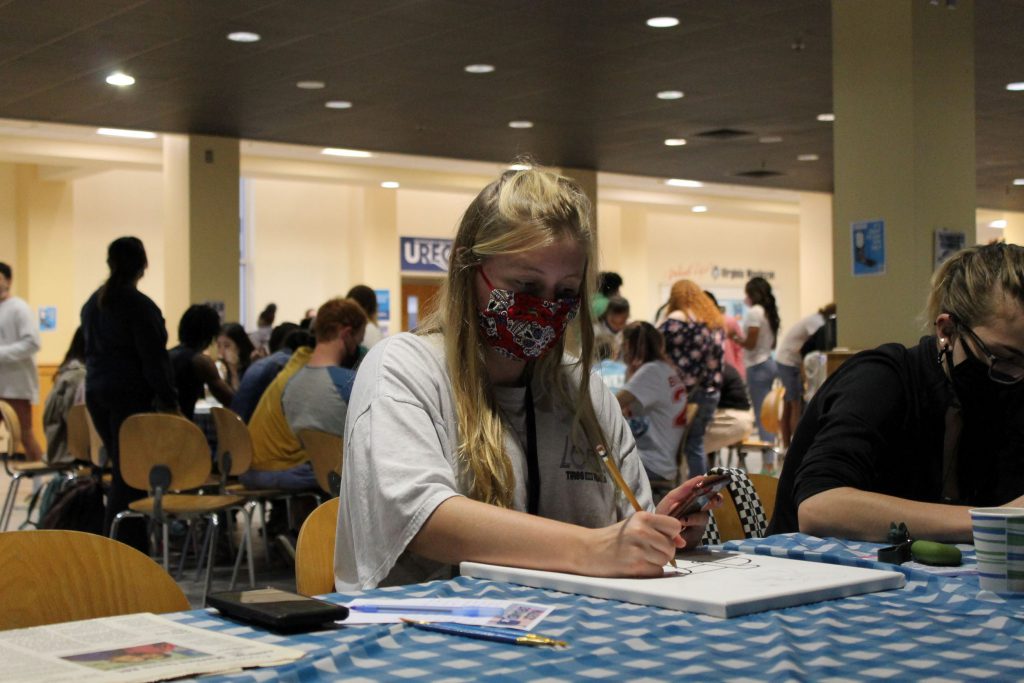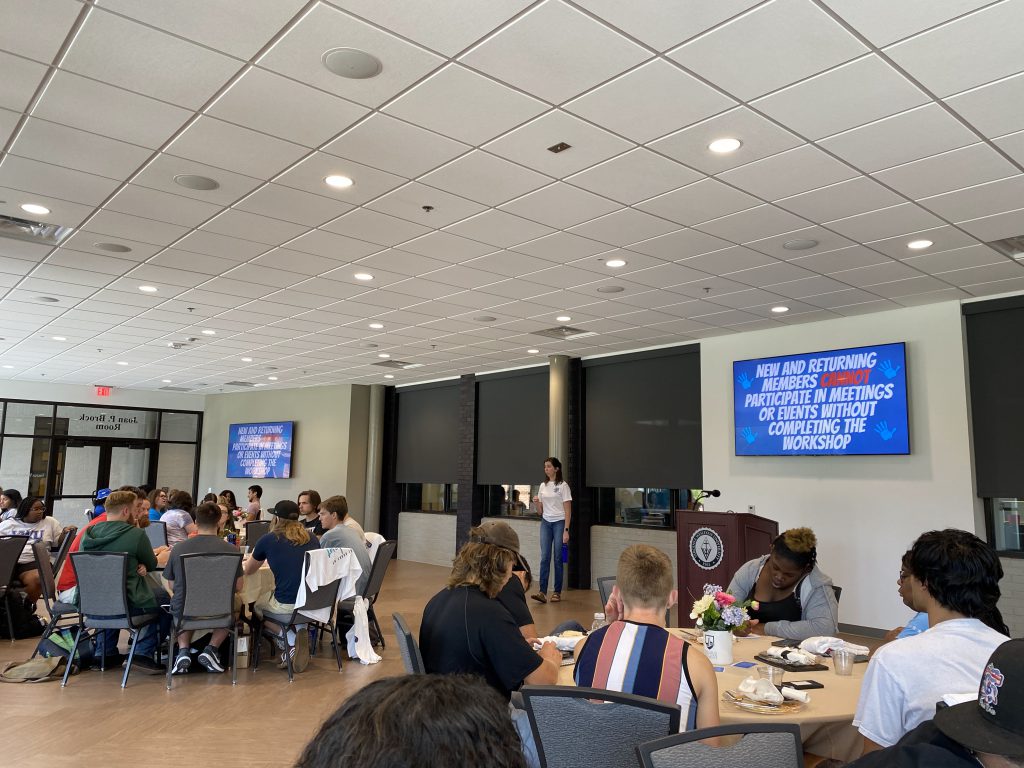The Greer Environmental Sciences Center (GESC), opened during the Fall 2017 semester, hosts “green” elements throughout the building, promoting concern for the environment throughout Virginia Wesleyan University.
This state-of-the-art facility is a nearly 40,000 square foot building and the newest addition to the VWU campus. “We got an anonymous donor that wanted to fund the whole building,” said Associate Provost and Professor of Biology Maynard Schaus. The building was donated in honor of former VWU president William T. “Billy” Greer, who retired in June 2015.
A geothermal system is used in the center for heating, cooling and hot water. This system is located underground in the open grassy area in front of the GESC. The geothermal system in the building is a prime example of the focus on the conservation of energy throughout campus.
The Chesapeake Bay Aquatics Center room within the GESC has six tanks holdings 50 gallons of water each that allow students to place organisms and animals in them for research. “It’s a research capacity for students,” Schaus said. The building also has an environmental chamber to better perform controlled research studies that lets students change the temperature, humidity and more based on what is needed for his or her research.
Throughout the building are motion sensor lights that are used to conserve electricity. “It’s really interesting because you can always tell if someone’s in the bathroom when you go in,” Christina Whipple joked as she guided the tour.
The chairs throughout the building were previously owned by another center and are made from durable materials that are meant to last. Schaus said the chairs were roughly 15 years old but still look brand new. They were purchased to save money as well as promote conservation by reusing previously owned items.
The third floor of the GESC is a walk-on green roof that includes a rooftop garden and photovoltaic, or solar, panels. The roof garden is home to low-growing succulents that soak up rainwater and reduce the heat flux through the roof by providing added insulation. This energy conservation leads to fewer greenhouse gas emissions that are used when heating and cooling the building. The solar panels convert sunlight directly into energy and are used to reduce the amount of electricity.
When asked what she thought was the most interesting part of the GESC, Whipple said, “I would definitely think it’s all of the reconstructed wetland.” The reconstructed wetland placed around the back of the building became a habitat for local wildlife including tree frogs and snakes. The reconstructed wetlands are for storm water runoff. The building also features “science on display,” which allows students to look through the windows of classrooms and labs and watch the science taking place.
Ally Chism
atchism@vwu.edu

